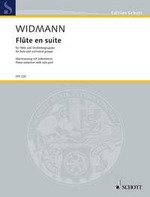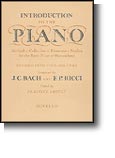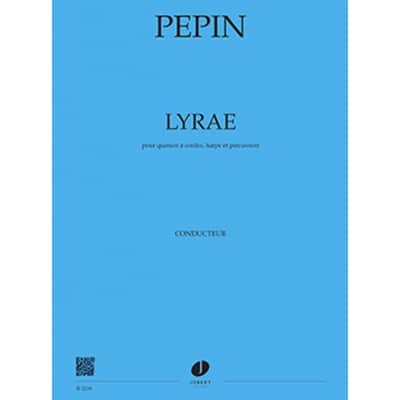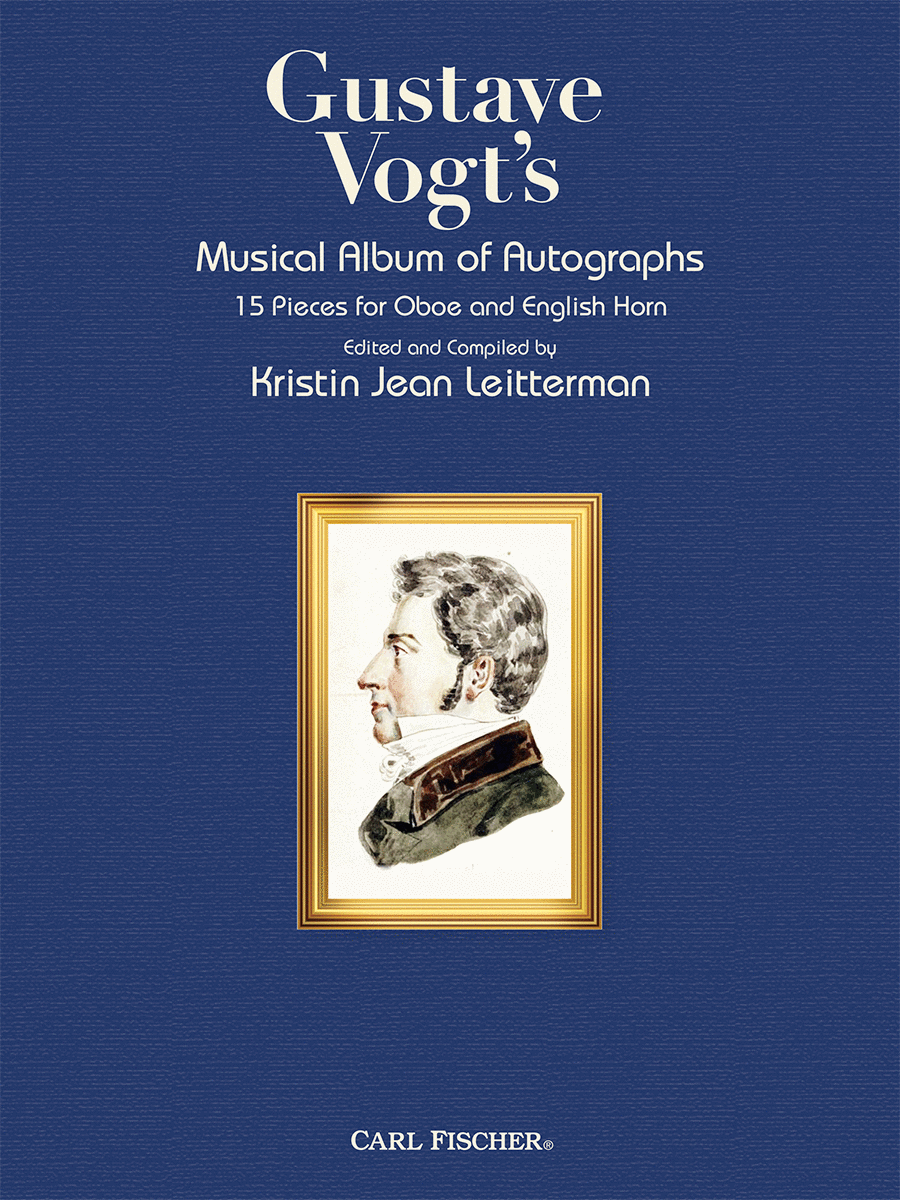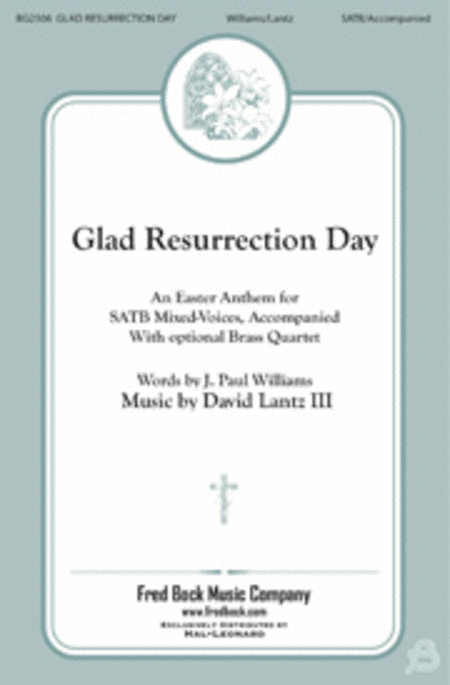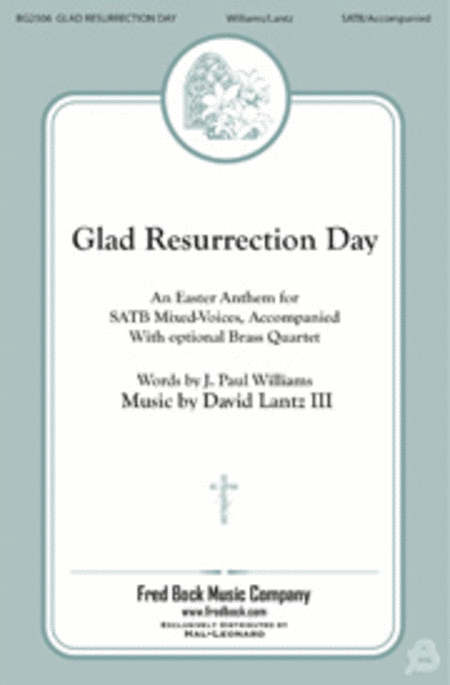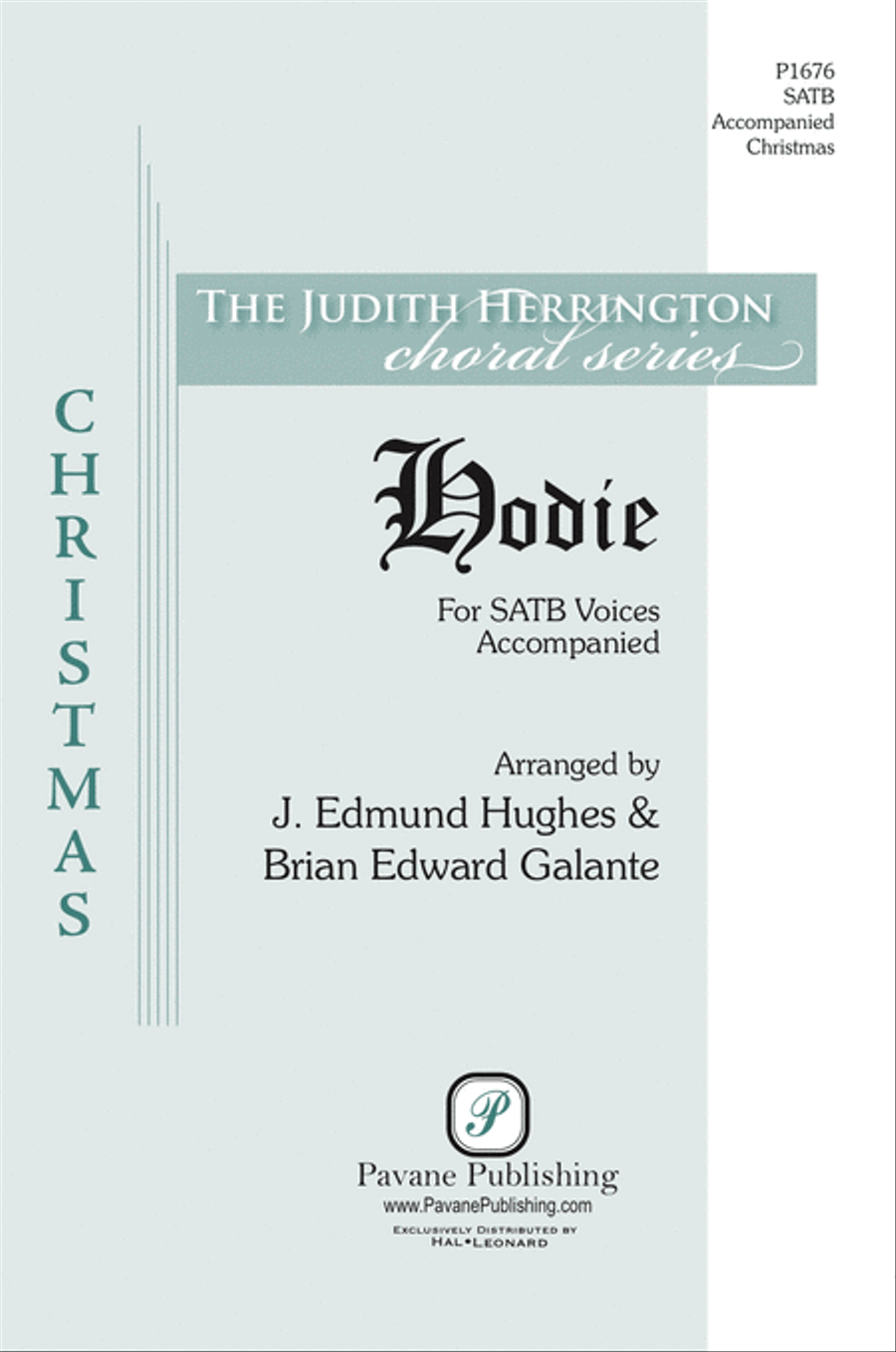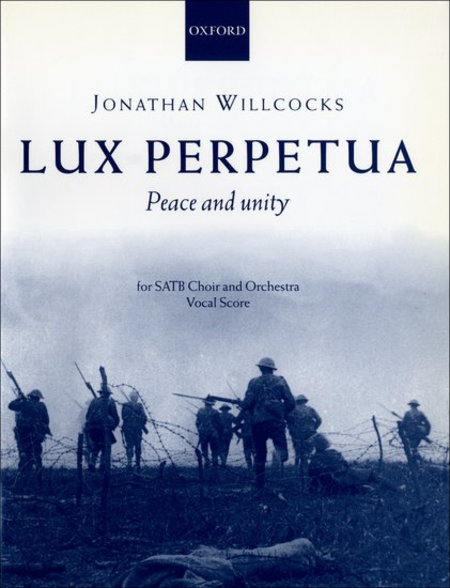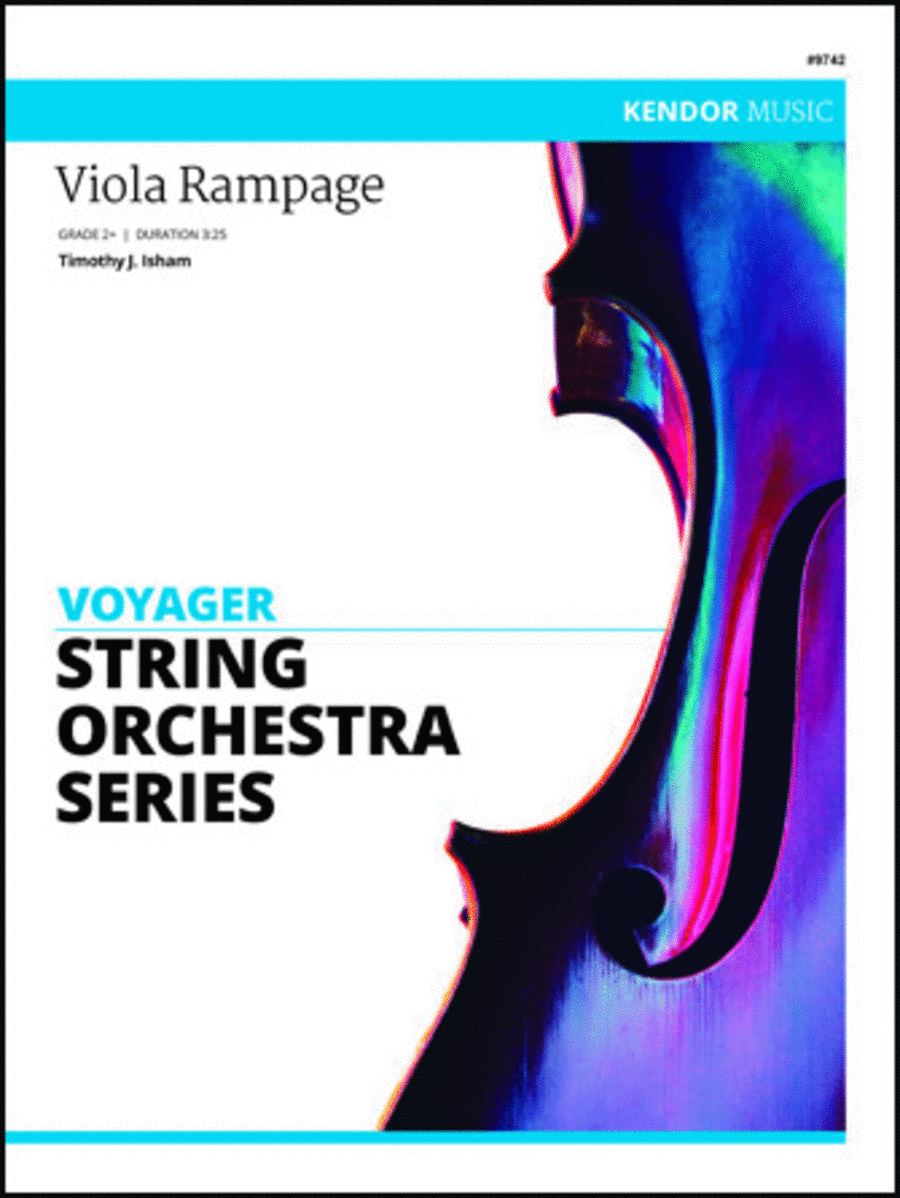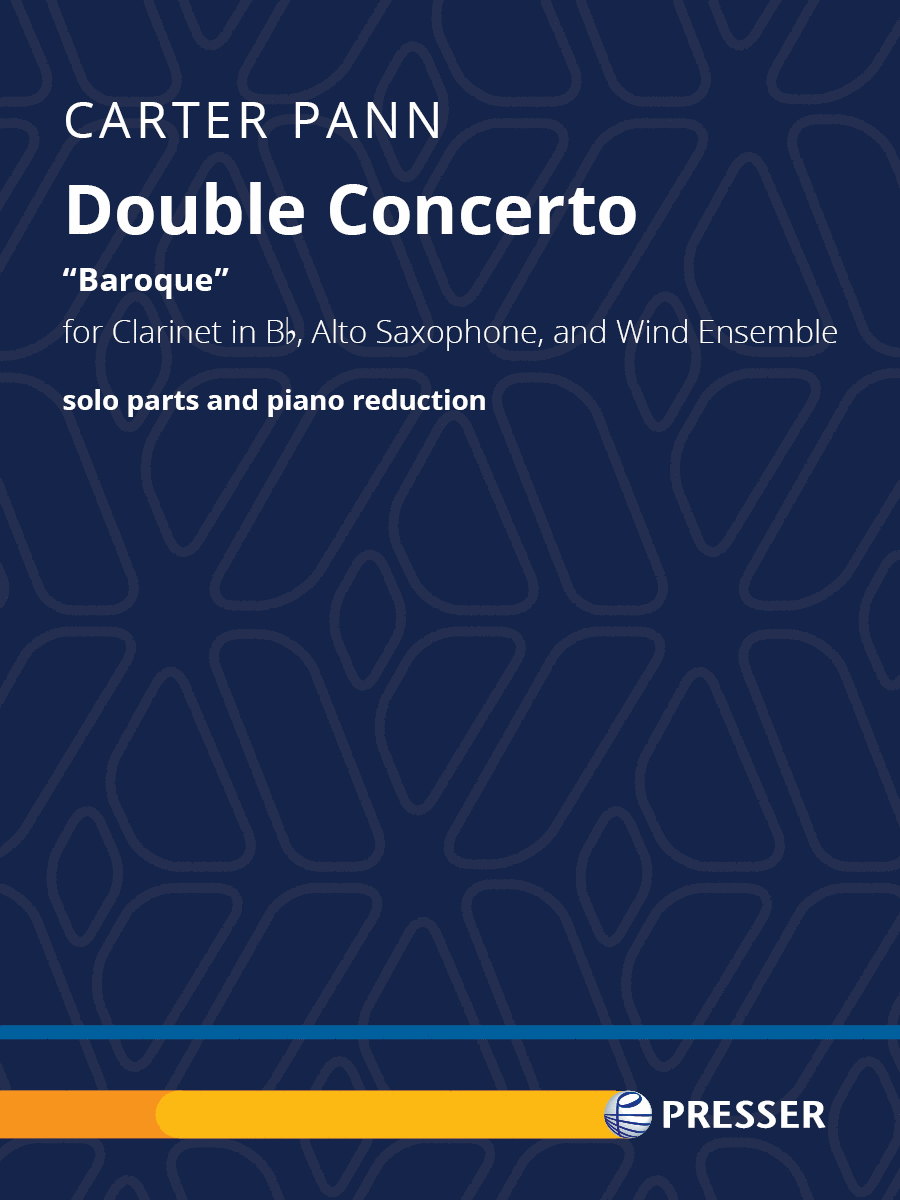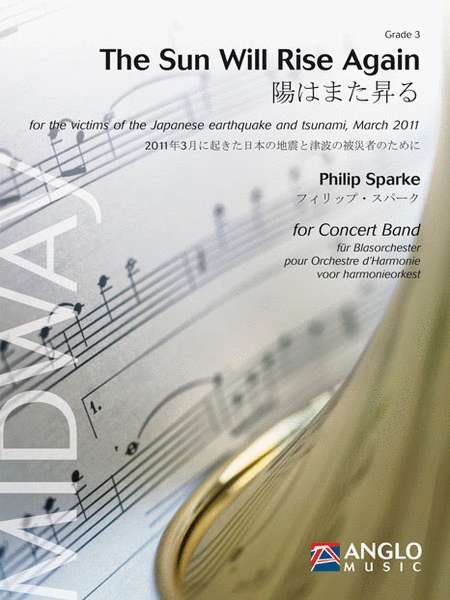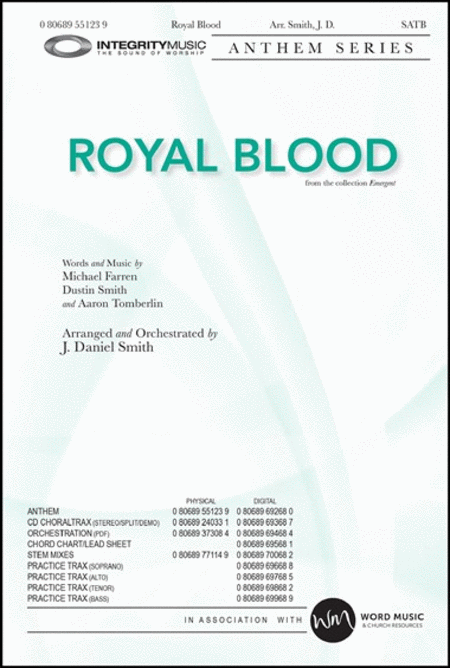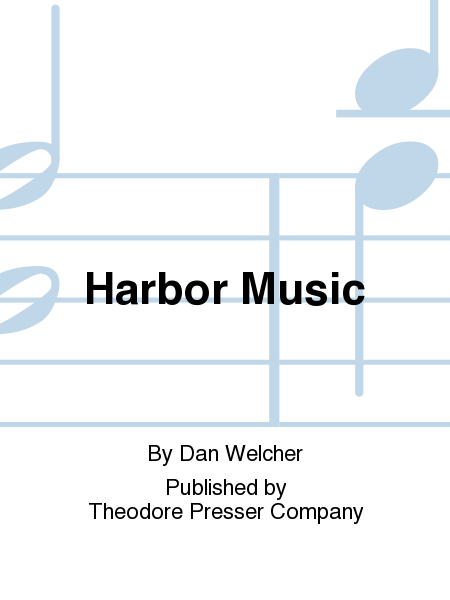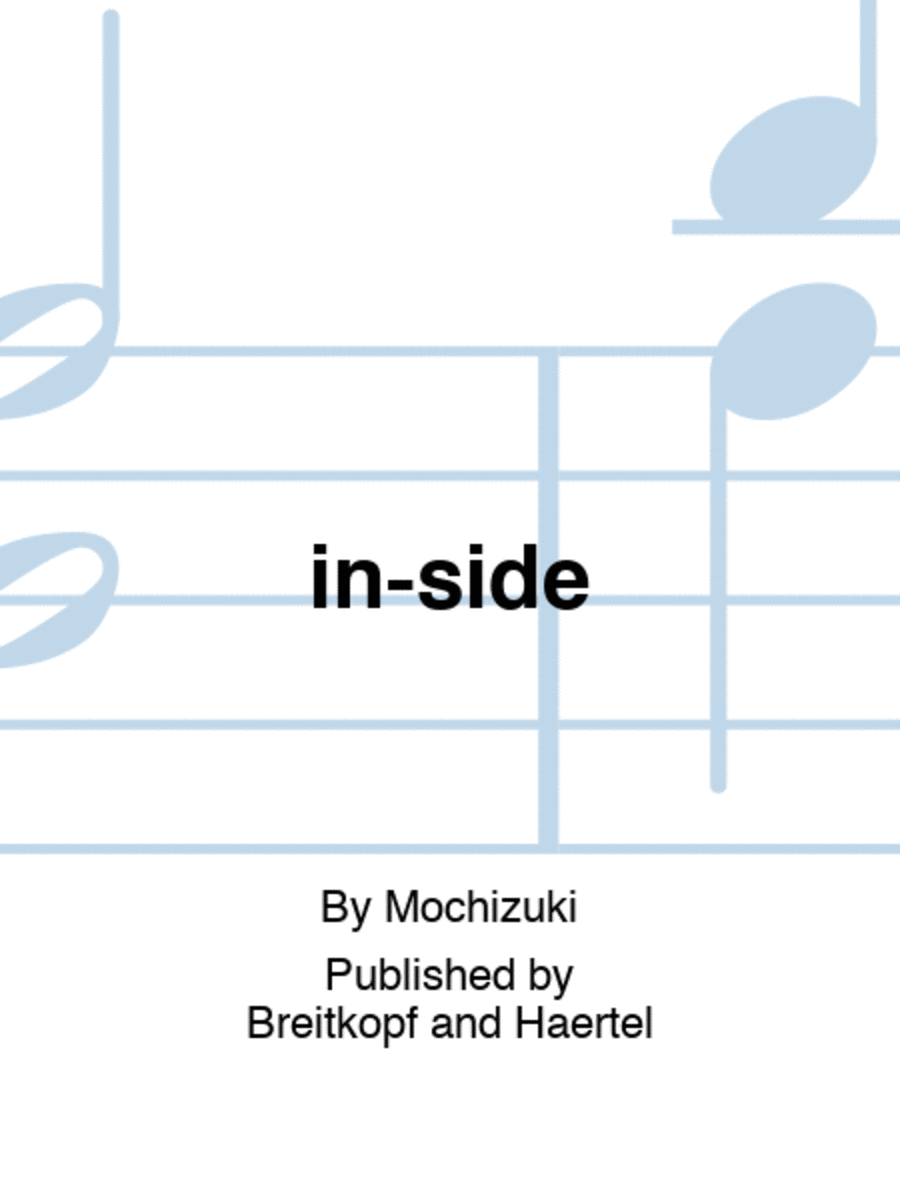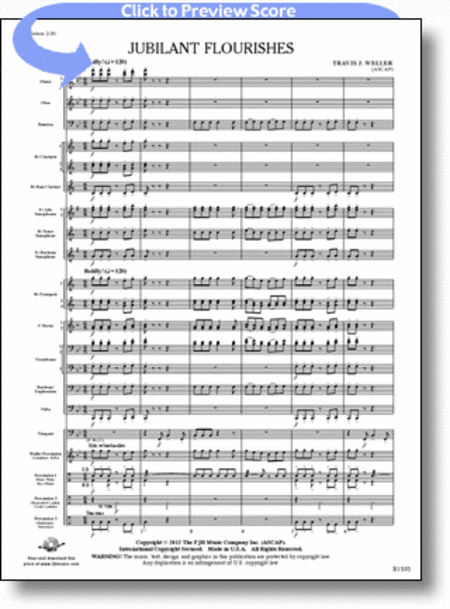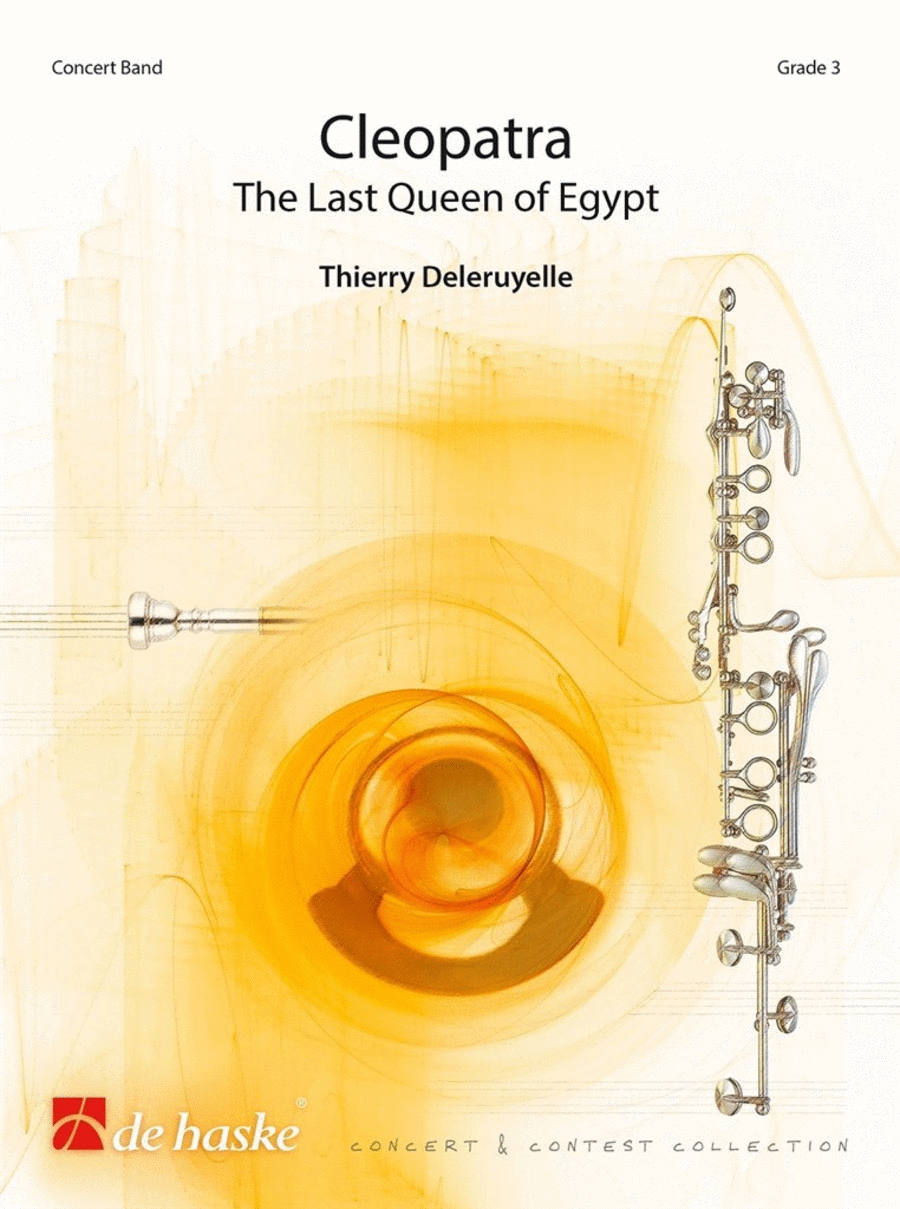|
| Flûte En Suite
Flûte traversière,
Orchestre
Schott
This ?Suite' is not one of my 'epic' instrumental concertos such as the concerto...(+)
This ?Suite' is not one of my 'epic' instrumental concertos such as the concertos for cello, violin or oboe, but a substantially smaller-structured series of dance forms arranged into a suite. Sunken worlds suddenly emerge here, only to reach the surface, hover in dangerously distorted fashion and then sink back to the bottom.Almost every individual movement allots the solo flute a specific tonal colouring and an instrumental group from the orchestra: in the opening Allemande, the flutes of the orchestra (including alto and bass flute and later also piccolo to include the entire flute family) - the string section in the Sarabande - in both chorales (extremely muted in the first and brutalist in the second), the brass etc. - and it is only in the concluding Badinerie that all orchestral groups are combined, although they are terraced in the Baroque style, one following another, seldom all playing simultaneously.This permits the flute to remain the provider of all impulses - it attaches itself to the wide variety of instrumental colours, becomes suffused with these colours and thereby shines in different lights - acerbic, pale and radiant. This first performance marks the conclusion of my two-year residence with the Cleveland Orchestra. The immense versatility of this fine body of sound (which is indeed treated as such with the sum of its parts) and the exciting dark timbre of its principal flautist Joshua Smith have to a great extent determined the form and tonal character of my Flûte en suite. Jörg Widmann / Flûte Et Orchestre
Délais: 2-5 jours - En Stock Fournisseur | | |
| J'Emerge
 En Français En Français
Piano, Voix
Capte Note
/ Piano Et Chant / Chanson En Séparée
Délais: 2-5 jours - En Stock Fournisseur | | |
| Bach And Ricci
Introduction To The Piano
Vol.1
Piano seul
Novello & Co Ltd.
In the second half of the 18th century, the forteiano emerged as the popular Key...(+)
In the second half of the 18th century, the forteiano emerged as the popular Keyboard instrument and the demand for books of instruction arose. The Introduction To The Piano created by Johann Christian Bach and Francesco Pasquale Ricci was one of the earliest. It focused on a sense of style rather than technical expertise. 'Without taste one may do great things, but only taste makes them interesting,' the authors write.J C Bach was the youngest son of J S Bach and received his earliest musical education from his father and from C P E Bach, making this Piano method book the work of a musician who was taught by Bach himself. Most of the exercises come from J C Bach's pen and they are a microcosm of musical styles of the era. The book includes, among other things, discussion of tone or tonality, mode, key, measure 'and its different species', accidentals, forms of composition, regulated practice and more. / Piano
Délais: 2-5 jours - En Stock Fournisseur | | |
| The Mermaids' Lagoon
(PLOWMAN LYNN)
1 Piano, 4 mains [Partition]
Cadenza Music
Par PLOWMAN LYNN. Inspired by J. M. Barrie's Peter Pan, this work for piano duet...(+)
Par PLOWMAN LYNN. Inspired by J. M. Barrie's Peter Pan, this work for piano duet sees one player seated at the keyboard and the other playing on the strings inside the piano. The otherworldy soundscape emerges from a variety of finger plucking and percussive tools struck on the undamped strings./ Répertoire / Piano 4 Mains
Délais: 2-5 jours - En Stock Fournisseur | | |
| Pepin Camille - Lyrae -
Quatuor A Cordes, Harpe &
Percussions
Jobert
Création 10/07/2017 - Aix-en-Provence, Hôtel Meynier d'Oppède - Académie d...(+)
Création 10/07/2017 - Aix-en-Provence, Hôtel Meynier d'Oppède - Académie du Festival d'Aix Commanditaire Académie du Festival d'Aix et ProQuartet Notice Lyrae est une oeuvre pour quatuor à cordes, harpe et percussions (grosse caisse, marimba, vibraphone et tamtam). Elle s'inspire d'une des étoiles les plus fascinantes de la constellation de la Lyre. Il s'agit en réalité d'une double-étoile dont chacune des entités exerce des forces cosmiques sur l'autre. S'attirant puis se repoussant, elles créent une sorte de ?halo?, de brume stellaire autour d'elles. Nimbées de poussière cosmique très énergétique, elles peuvent cependant s'éclipser l'une l'autre. J'ai donc conçu la pièce d'un seul tenant, comme un véritable pas de deux du couple d'étoiles. Menant la danse à tour de rôle, elles se meuvent et rayonnent dans l'espace, illuminant ainsi le ciel de leurs faisceaux aux forces distinctes. Une introduction présente un espace sombre, aussi mystérieux que menaçant. La matière gronde, se désagrège, et se transforme au fur et à mesure en poussière lumineuse et scintillante. Un épisode plus lyrique émerge de cette brume stellaire floue, avant de retrouver l'obscurité angoissante initiale. Tout l'enjeu de cette oeuvre était de représenter musicalement ces deux facettes de Lyrae - non pas comme des entités différentes, mais comme deux mondes entremêlés qui s'enchaînent et se fondent l'un dans l'autre sans jamais s'affronter. Camille Pepin
Délais: En Stock | |
|
|
|
| Gustave Vogt's Musical Album of Autographs
Cor anglais, Piano
Carl Fischer
Chamber Music English Horn, Oboe SKU: CF.WF229 15 Pieces for Oboe and ...(+)
Chamber Music English
Horn, Oboe SKU:
CF.WF229 15 Pieces
for Oboe and English
Horn. Composed by
Gustave Vogt. Edited by
Kristin Jean Leitterman.
Collection - Performance.
32+8 pages. Carl Fischer
Music #WF229. Published
by Carl Fischer Music
(CF.WF229). ISBN
9781491153789. UPC:
680160911288. Intro
duction Gustave Vogt's
Musical Paris Gustave
Vogt (1781-1870) was born
into the Age of
Enlightenment, at the
apex of the
Enlightenment's outreach.
During his lifetime he
would observe its effect
on the world. Over the
course of his life he
lived through many
changes in musical style.
When he was born,
composers such as Mozart
and Haydn were still
writing masterworks
revered today, and
eighty-nine years later,
as he departed the world,
the new realm of
Romanticism was beginning
to emerge with Mahler,
Richard Strauss and
Debussy, who were soon to
make their respective
marks on the musical
world. Vogt himself left
a huge mark on the
musical world, with
critics referring to him
as the grandfather of the
modern oboe and the
premier oboist of Europe.
Through his eighty-nine
years, Vogt would live
through what was perhaps
the most turbulent period
of French history. He
witnessed the French
Revolution of 1789,
followed by the many
newly established
governments, only to die
just months before the
establishment of the
Third Republic in 1870,
which would be the
longest lasting
government since the
beginning of the
revolution. He also
witnessed the
transformation of the
French musical world from
one in which opera
reigned supreme, to one
in which virtuosi,
chamber music, and
symphonic music ruled.
Additionally, he
experienced the
development of the oboe
right before his eyes.
When he began playing in
the late eighteenth
century, the standard
oboe had two keys (E and
Eb) and at the time of
his death in 1870, the
System Six Triebert oboe
(the instrument adopted
by Conservatoire
professor, Georges
Gillet, in 1882) was only
five years from being
developed. Vogt was born
March 18, 1781 in the
ancient town of
Strasbourg, part of the
Alsace region along the
German border. At the
time of his birth,
Strasbourg had been
annexed by Louis XIV, and
while heavily influenced
by Germanic culture, had
been loosely governed by
the French for a hundred
years. Although it is
unclear when Vogt began
studying the oboe and
when his family made its
move to the French
capital, the Vogts may
have fled Strasbourg in
1792 after much of the
city was destroyed during
the French Revolution. He
was without question
living in Paris by 1798,
as he enrolled on June 8
at the newly established
Conservatoire national de
Musique to study oboe
with the school's first
oboe professor,
Alexandre-Antoine
Sallantin (1775-1830).
Vogt's relationship with
the Conservatoire would
span over half a century,
moving seamlessly from
the role of student to
professor. In 1799, just
a year after enrolling,
he was awarded the
premier prix, becoming
the fourth oboist to
achieve this award. By
1802 he had been
appointed repetiteur,
which involved teaching
the younger students and
filling in for Sallantin
in exchange for a free
education. He maintained
this rank until 1809,
when he was promoted to
professor adjoint and
finally to professor
titulaire in 1816 when
Sallantin retired. This
was a position he held
for thirty-seven years,
retiring in 1853, making
him the longest serving
oboe professor in the
school's history. During
his tenure, he became the
most influential oboist
in France, teaching
eighty-nine students,
plus sixteen he taught
while he was professor
adjoint and professor
titulaire. Many of these
students went on to be
famous in their own
right, such as Henri Brod
(1799-1839), Apollon
Marie-Rose Barret
(1804-1879), Charles
Triebert (1810-1867),
Stanislas Verroust
(1814-1863), and Charles
Colin (1832-1881). His
influence stretches from
French to American oboe
playing in a direct line
from Charles Colin to
Georges Gillet
(1854-1920), and then to
Marcel Tabuteau
(1887-1966), the oboist
Americans lovingly
describe as the father of
American oboe playing.
Opera was an important
part of Vogt's life. His
first performing position
was with the
Theatre-Montansier while
he was still studying at
the Conservatoire.
Shortly after, he moved
to the Ambigu-Comique
and, in 1801 was
appointed as first oboist
with the Theatre-Italien
in Paris. He had been in
this position for only a
year, when he began
playing first oboe at the
Opera-Comique. He
remained there until
1814, when he succeeded
his teacher,
Alexandre-Antoine
Sallantin, as soloist
with the Paris Opera, the
top orchestra in Paris at
the time. He played with
the Paris Opera until
1834, all the while
bringing in his current
and past students to fill
out the section. In this
position, he began to
make a name for himself;
so much so that specific
performances were
immortalized in memoirs
and letters. One comes
from a young Hector
Berlioz (1803-1865) after
having just arrived in
Paris in 1822 and
attended the Paris
Opera's performance of
Mehul's Stratonice and
Persuis' ballet Nina. It
was in response to the
song Quand le bien-amie
reviendra that Berlioz
wrote: I find it
difficult to believe that
that song as sung by her
could ever have made as
true and touching an
effect as the combination
of Vogt's instrument...
Shortly after this,
Berlioz gave up studying
medicine and focused on
music. Vogt frequently
made solo and chamber
appearances throughout
Europe. His busiest
period of solo work was
during the 1820s. In 1825
and 1828 he went to
London to perform as a
soloist with the London
Philharmonic Society.
Vogt also traveled to
Northern France in 1826
for concerts, and then in
1830 traveled to Munich
and Stuttgart, visiting
his hometown of
Strasbourg on the way.
While on tour, Vogt
performed Luigi
Cherubini's (1760-1842)
Ave Maria, with soprano
Anna (Nanette) Schechner
(1806-1860), and a
Concertino, presumably
written by himself. As a
virtuoso performer in
pursuit of repertoire to
play, Vogt found himself
writing much of his own
music. His catalog
includes chamber music,
variation sets, vocal
music, concerted works,
religious music, wind
band arrangements, and
pedagogical material. He
most frequently performed
his variation sets, which
were largely based on
themes from popular
operas he had, presumably
played while he was at
the Opera. He made his
final tour in 1839,
traveling to Tours and
Bordeaux. During this
tour he appeared with the
singer Caroline Naldi,
Countess de Sparre, and
the violinist Joseph
Artot (1815-1845). This
ended his active career
as a soloist. His
performance was described
in the Revue et gazette
musicale de Paris as
having lost none of his
superiority over the
oboe.... It's always the
same grace, the same
sweetness. We made a trip
to Switzerland, just by
closing your eyes and
listening to Vogt's oboe.
Vogt was also active
performing in Paris as a
chamber and orchestral
musician. He was one of
the founding members of
the Societe des Concerts
du Conservatoire, a group
established in 1828 by
violinist and conductor
Francois-Antoine Habeneck
(1781-1849). The group
featured faculty and
students performing
alongside each other and
works such as Beethoven
symphonies, which had
never been heard in
France. He also premiered
the groundbreaking
woodwind quintets of
Antonin Reicha
(1770-1836). After his
retirement from the Opera
in 1834 and from the
Societe des Concerts du
Conservatoire in 1842,
Vogt began to slow down.
His final known
performance was of
Cherubini's Ave Maria on
English horn with tenor
Alexis Dupont (1796-1874)
in 1843. He then began to
reflect on his life and
the people he had known.
When he reached his 60s,
he began gathering
entries for his Musical
Album of Autographs.
Autograph Albums Vogt's
Musical Album of
Autographs is part of a
larger practice of
keeping autograph albums,
also commonly known as
Stammbuch or Album
Amicorum (meaning book of
friendship or friendship
book), which date back to
the time of the
Reformation and the
University of Wittenberg.
It was during the
mid-sixteenth century
that students at the
University of Wittenberg
began passing around
bibles for their fellow
students and professors
to sign, leaving messages
to remember them by as
they moved on to the next
part of their lives. The
things people wrote were
mottos, quotes, and even
drawings of their family
coat of arms or some
other scene that meant
something to the owner.
These albums became the
way these young students
remembered their school
family once they had
moved on to another
school or town. It was
also common for the
entrants to comment on
other entries and for the
owner to amend entries
when they learned of
important life details
such as marriage or
death. As the practice
continued, bibles were
set aside for emblem
books, which was a
popular book genre that
featured allegorical
illustrations (emblems)
in a tripartite form:
image, motto, epigram.
The first emblem book
used for autographs was
published in 1531 by
Andrea Alciato
(1492-1550), a collection
of 212 Latin emblem
poems. In 1558, the first
book conceived for the
purpose of the album
amicorum was published by
Lyon de Tournes
(1504-1564) called the
Thesaurus Amicorum. These
books continued to
evolve, and spread to
wider circles away from
universities. Albums
could be found being kept
by noblemen, physicians,
lawyers, teachers,
painters, musicians, and
artisans. The albums
eventually became more
specialized, leading to
Musical Autograph Albums
(or Notestammbucher).
Before this
specialization, musicians
contributed in one form
or another, but our
knowledge of them in
these albums is mostly
limited to individual
people or events. Some
would simply sign their
name while others would
insert a fragment of
music, usually a canon
(titled fuga) with text
in Latin. Canons were
popular because they
displayed the
craftsmanship of the
composer in a limited
space. Composers
well-known today,
including J. S. Bach,
Telemann, Mozart,
Beethoven, Dowland, and
Brahms, all participated
in the practice, with
Beethoven being the first
to indicate an interest
in creating an album only
of music. This interest
came around 1815. In an
1845 letter from Johann
Friedrich Naue to
Heinrich Carl
Breidenstein, Naue
recalled an 1813 visit
with Beethoven, who
presented a book
suggesting Naue to
collect entries from
celebrated musicians as
he traveled. Shortly
after we find Louis Spohr
speaking about leaving on
his grand tour through
Europe in 1815 and of his
desire to carry an album
with entries from the
many artists he would
come across. He wrote in
his autobiography that
his most valuable
contribution came from
Beethoven in 1815.
Spohr's Notenstammbuch,
comprised only of musical
entries, is
groundbreaking because it
was coupled with a
concert tour, allowing
him to reach beyond the
Germanic world, where the
creation of these books
had been nearly
exclusive. Spohr brought
the practice of
Notenstammbucher to
France, and in turn
indirectly inspired Vogt
to create a book of his
own some fifteen years
later. Vogt's Musical
Album of Autographs
Vogt's Musical Album of
Autographs acts as a form
of a memoir, displaying
mementos of musicians who
held special meaning in
his life as well as
showing those with whom
he was enamored from the
younger generation. The
anonymous Pie Jesu
submitted to Vogt in 1831
marks the beginning of an
album that would span
nearly three decades by
the time the final entry,
an excerpt from Charles
Gounod's (1818-1893)
Faust, which premiered in
1859, was submitted.
Within this album we find
sixty-two entries from
musicians whom he must
have known very well
because they were
colleagues at the
Conservatoire, or
composers of opera whose
works he was performing
with the Paris Opera.
Other entries came from
performers with whom he
had performed and some
who were simply passing
through Paris, such as
Joseph Joachim
(1831-1907). Of the
sixty-three total
entries, some are
original, unpublished
works, while others came
from well-known existing
works. Nineteen of these
works are for solo piano,
sixteen utilize the oboe
or English horn, thirteen
feature the voice (in
many different
combinations, including
vocal solos with piano,
and small choral settings
up to one with double
choir), two feature
violin as a solo
instrument, and one even
features the now obscure
ophicleide. The
connections among the
sixty-two contributors to
Vogt's album are
virtually never-ending.
All were acquainted with
Vogt in some capacity,
from long-time
friendships to
relationships that were
created when Vogt
requested their entry.
Thus, while Vogt is the
person who is central to
each of these musicians,
the web can be greatly
expanded. In general, the
connections are centered
around the Conservatoire,
teacher lineages, the
Opera, and performing
circles. The
relationships between all
the contributors in the
album parallel the
current musical world, as
many of these kinds of
relationships still
exist, and permit us to
fantasize who might be
found in an album created
today by a musician of
the same standing. Also
important, is what sort
of entries the
contributors chose to
pen. The sixty-three
entries are varied, but
can be divided into
published and unpublished
works. Within the
published works, we find
opera excerpts, symphony
excerpts, mass excerpts,
and canons, while the
unpublished works include
music for solo piano,
oboe or English horn,
string instruments
(violin and cello), and
voice (voice with piano
and choral). The music
for oboe and English horn
works largely belong in
the unpublished works of
the album. These entries
were most likely written
to honor Vogt. Seven are
for oboe and piano and
were contributed by
Joseph Joachim, Pauline
Garcia Viardot
(1821-1910), Joseph
Artot, Anton Bohrer
(1783-1852), Georges
Onslow (1784-1853),
Desire Beaulieu
(1791-1863), and Narcisse
Girard (1797-1860). The
common thread between
these entries is the
simplicity of the melody
and structure. Many are
repetitive, especially
Beaulieu's entry, which
features a two-note
ostinato throughout the
work, which he even
included in his
signature. Two composers
contributed pieces for
English horn and piano,
and like the previous
oboe entries, are simple
and repetitive. These
were written by Michele
Carafa (1787-1872) and
Louis Clapisson
(1808-1866). There are
two other entries that
were unpublished works
and are chamber music.
One is an oboe trio by
Jacques Halevy
(1799-1862) and the other
is for oboe and strings
(string trio) by J. B.
Cramer (1771-1858). There
are five published works
in the album for oboe and
English horn. There are
three from operas and the
other two from symphonic
works. Ambroise Thomas
(1811-1896) contributed
an excerpt from the
Entr'acte of his opera La
Guerillero, and was
likely chosen because the
oboe was featured at this
moment. Hippolyte Chelard
(1789-1861) also chose to
honor Vogt by writing for
English horn. His entry,
for English horn and
piano, is taken from his
biggest success, Macbeth.
The English horn part was
actually taken from Lady
Macbeth's solo in the
sleepwalking scene.
Vogt's own entry also
falls into this category,
as he entered an excerpt
from Donizetti's Maria di
Rohan. The excerpt he
chose is a duet between
soprano and English horn.
There are two entries
featuring oboe that are
excerpted from symphonic
repertoire. One is a
familiar oboe melody from
Beethoven's Pastoral
Symphony entered by his
first biographer, Anton
Schindler (1796-1864).
The other is an excerpt
from Berlioz's choral
symphony, Romeo et
Juliette. He entered an
oboe solo from the Grand
Fete section of the
piece. Pedagogical
benefit All of these
works are lovely, and fit
within the album
wonderfully, but these
works also are great oboe
and English horn music
for young students. The
common thread between
these entries is the
simplicity of the melody
and structure. Many are
repetitive, especially
Beaulieu's entry, which
features a two-note
ostinato throughout the
work in the piano. This
repetitive structure is
beneficial for young
students for searching
for a short solo to
present at a studio
recital, or simply to
learn. They also work
many technical issues a
young player may
encounter, such as
mastering the rolling
finger to uncover and
recover the half hole.
This is true of Bealieu's
Pensee as well as
Onslow's Andantino.
Berlioz's entry from
Romeo et Juliette
features very long
phrases, which helps with
endurance and helps keep
the air spinning through
the oboe. Some of the
pieces also use various
levels of ornamentation,
from trills to grace
notes, and short
cadenzas. This allows the
student to learn
appropriate ways to
phrase with these added
notes. The chamber music
is a valuable way to
start younger students
with chamber music,
especially the short
quartet by Cramer for
oboe and string trio. All
of these pieces will not
tax the student to learn
a work that is more
advanced, as well as give
them a full piece that
they can work on from
beginning to end in a
couple weeks, instead of
months. Editorial Policy
The works found in this
edition are based on the
manuscript housed at the
Morgan Library in New
York City (call number
Cary 348, V886. A3). When
possible, published
scores were consulted and
compared to clarify pitch
and text. The general
difficulties in creating
an edition of these works
stem from entries that
appear to be hastily
written, and thus omit
complete articulations
and dynamic indications
for all passages and
parts. The manuscript has
been modernized into a
performance edition. The
score order from the
manuscript has been
retained. If an entry
also exists in a
published work, and this
was not indicated on the
manuscript, appropriate
titles and subtitles have
been added tacitly. For
entries that were
untitled, the beginning
tempo marking or
expressive directive has
been added as its title
tacitly. Part names have
been changed from the
original language to
English. If no part name
was present, it was added
tacitly. All scores are
transposing where
applicable. Measure
numbers have been added
at the beginning of every
system. Written
directives have been
retained in the original
language and are placed
relative to where they
appear in the manuscript.
Tempo markings from the
manuscript have been
retained, even if they
were abbreviated, i.e.,
Andte. The barlines,
braces, brackets, and
clefs are modernized. The
beaming and stem
direction has been
modernized. Key
signatures have been
modernized as some of the
flats/sharps do not
appear on the correct
lines or spaces. Time
signatures have been
modernized. In a few
cases, when a time
signature was missing in
the manuscript, it has
been added tacitly.
Triplet and rhythmic
groupings have been
modernized. Slurs, ties,
and articulations
(staccato and accent)
have been modernized.
Slurs, ties, and
articulations have been
added to parallel
passages tacitly.
Courtesy accidentals
found in the manuscript
have been removed, unless
it appeared to be helpful
to the performer. Dynamic
indications from the
manuscript have been
retained, except where
noted. --Kristin
Leitterman.
Introducti
onGustave Vogt’s
Musical ParisGustave Vogt
(1781–1870) was
born into the “Age
of Enlightenment,â€
at the apex of the
Enlightenment’s
outreach. During his
lifetime he would observe
its effect on the world.
Over the course of his
life he lived through
many changes in musical
style. When he was born,
composers such as Mozart
and Haydn were still
writing masterworks
revered today, and
eighty-nine years later,
as he departed the world,
the new realm of
Romanticism was beginning
to emerge with Mahler,
Richard Strauss and
Debussy, who were soon to
make their respective
marks on the musical
world. Vogt himself left
a huge mark on the
musical world, with
critics referring to him
as the “grandfather
of the modern oboeâ€
and the “premier
oboist of
Europe.â€Through his
eighty-nine years, Vogt
would live through what
was perhaps the most
turbulent period of
French history. He
witnessed the French
Revolution of 1789,
followed by the many
newly established
governments, only to die
just months before the
establishment of the
Third Republic in 1870,
which would be the
longest lasting
government since the
beginning of the
revolution. He also
witnessed the
transformation of the
French musical world from
one in which opera
reigned supreme, to one
in which virtuosi,
chamber music, and
symphonic music ruled.
Additionally, he
experienced the
development of the oboe
right before his eyes.
When he began playing in
the late eighteenth
century, the standard
oboe had two keys (E and
Eb) and at the time of
his death in 1870, the
“System Sixâ€
Triébert oboe (the
instrument adopted by
Conservatoire professor,
Georges Gillet, in 1882)
was only five years from
being developed.Vogt was
born March 18, 1781 in
the ancient town of
Strasbourg, part of the
Alsace region along the
German border. At the
time of his birth,
Strasbourg had been
annexed by Louis XIV, and
while heavily influenced
by Germanic culture, had
been loosely governed by
the French for a hundred
years. Although it is
unclear when Vogt began
studying the oboe and
when his family made its
move to the French
capital, the Vogts may
have fled Strasbourg in
1792 after much of the
city was destroyed during
the French Revolution. He
was without question
living in Paris by 1798,
as he enrolled on June 8
at the newly established
Conservatoire national de
Musique to study oboe
with the school’s
first oboe professor,
Alexandre-Antoine
Sallantin
(1775–1830).Vogtâ
€™s relationship with
the Conservatoire would
span over half a century,
moving seamlessly from
the role of student to
professor. In 1799, just
a year after enrolling,
he was awarded the
premier prix, becoming
the fourth oboist to
achieve this award. By
1802 he had been
appointed
répétiteur, which
involved teaching the
younger students and
filling in for Sallantin
in exchange for a free
education. He maintained
this rank until 1809,
when he was promoted to
professor adjoint and
finally to professor
titulaire in 1816 when
Sallantin retired. This
was a position he held
for thirty-seven years,
retiring in 1853, making
him the longest serving
oboe professor in the
school’s history.
During his tenure, he
became the most
influential oboist in
France, teaching
eighty-nine students,
plus sixteen he taught
while he was professor
adjoint and professor
titulaire. Many of these
students went on to be
famous in their own
right, such as Henri Brod
(1799–1839),
Apollon Marie-Rose Barret
(1804–1879),
Charles Triebert
(1810–1867),
Stanislas Verroust
(1814–1863), and
Charles Colin
(1832–1881). His
influence stretches from
French to American oboe
playing in a direct line
from Charles Colin to
Georges Gillet
(1854–1920), and
then to Marcel Tabuteau
(1887–1966), the
oboist Americans lovingly
describe as the
“father of American
oboe playing.â€Opera
was an important part of
Vogt’s life. His
first performing position
was with the
Théâtre-Montansier
while he was still
studying at the
Conservatoire. Shortly
after, he moved to the
Ambigu-Comique and, in
1801 was appointed as
first oboist with the
Théâtre-Italien in
Paris. He had been in
this position for only a
year, when he began
playing first oboe at the
Opéra-Comique. He
remained there until
1814, when he succeeded
his teacher,
Alexandre-Antoine
Sallantin, as soloist
with the Paris Opéra,
the top orchestra in
Paris at the time. He
played with the Paris
Opéra until 1834, all
the while bringing in his
current and past students
to fill out the section.
In this position, he
began to make a name for
himself; so much so that
specific performances
were immortalized in
memoirs and letters. One
comes from a young Hector
Berlioz
(1803–1865) after
having just arrived in
Paris in 1822 and
attended the Paris
Opéra’s
performance of
Mehul’s Stratonice
and Persuis’
ballet Nina. It was in
response to the song
Quand le bien-amié
reviendra that Berlioz
wrote: “I find it
difficult to believe that
that song as sung by her
could ever have made as
true and touching an
effect as the combination
of Vogt’s
instrument…â€
Shortly after this,
Berlioz gave up studying
medicine and focused on
music.Vogt frequently
made solo and chamber
appearances throughout
Europe. His busiest
period of solo work was
during the 1820s. In 1825
and 1828 he went to
London to perform as a
soloist with the London
Philharmonic Society.
Vogt also traveled to
Northern France in 1826
for concerts, and then in
1830 traveled to Munich
and Stuttgart, visiting
his hometown of
Strasbourg on the way.
While on tour, Vogt
performed Luigi
Cherubini’s
(1760–1842) Ave
Maria, with soprano Anna
(Nanette) Schechner
(1806–1860), and a
Concertino, presumably
written by himself. As a
virtuoso performer in
pursuit of repertoire to
play, Vogt found himself
writing much of his own
music. His catalog
includes chamber music,
variation sets, vocal
music, concerted works,
religious music, wind
band arrangements, and
pedagogical material. He
most frequently performed
his variation sets, which
were largely based on
themes from popular
operas he had, presumably
played while he was at
the Opéra.He made his
final tour in 1839,
traveling to Tours and
Bordeaux. During this
tour he appeared with the
singer Caroline Naldi,
Countess de Sparre, and
the violinist Joseph
Artôt
(1815–1845). This
ended his active career
as a soloist. His
performance was described
in the Revue et gazette
musicale de Paris as
having “lost none
of his superiority over
the oboe….
It’s always the
same grace, the same
sweetness. We made a trip
to Switzerland, just by
closing your eyes and
listening to
Vogt’s
oboe.â€Vogt was also
active performing in
Paris as a chamber and
orchestral musician. He
was one of the founding
members of the
Société des
Concerts du
Conservatoire, a group
established in 1828 by
violinist and conductor
François-Antoine
Habeneck
(1781–1849). The
group featured faculty
and students performing
alongside each other and
works such as Beethoven
symphonies, which had
never been heard in
France. He also premiered
the groundbreaking
woodwind quintets of
Antonin Reicha
(1770–1836).After
his retirement from the
Opéra in 1834 and from
the Société des
Concerts du Conservatoire
in 1842, Vogt began to
slow down. His final
known performance was of
Cherubini’s Ave
Maria on English horn
with tenor Alexis Dupont
(1796–1874) in
1843. He then began to
reflect on his life and
the people he had known.
When he reached his 60s,
he began gathering
entries for his Musical
Album of
Autographs.Autograph
AlbumsVogt’s
Musical Album of
Autographs is part of a
larger practice of
keeping autograph albums,
also commonly known as
Stammbuch or Album
Amicorum (meaning book of
friendship or friendship
book), which date back to
the time of the
Reformation and the
University of Wittenberg.
It was during the
mid-sixteenth century
that students at the
University of Wittenberg
began passing around
bibles for their fellow
students and professors
to sign, leaving messages
to remember them by as
they moved on to the next
part of their lives. The
things people wrote were
mottos, quotes, and even
drawings of their family
coat of arms or some
other scene that meant
something to the owner.
These albums became the
way these young students
remembered their school
family once they had
moved on to another
school or town. It was
also common for the
entrants to comment on
other entries and for the
owner to amend entries
when they learned of
important life details
such as marriage or
death.As the practice
continued, bibles were
set aside for emblem
books, which was a
popular book genre that
featured allegorical
illustrations (emblems)
in a tripartite form:
image, motto, epigram.
The first emblem book
used for autographs was
published in 1531 by
Andrea Alciato
(1492–1550), a
collection of 212 Latin
emblem poems. In 1558,
the first book conceived
for the purpose of the
album amicorum was
published by Lyon de
Tournes
(1504–1564) called
the Thesaurus Amicorum.
These books continued to
evolve, and spread to
wider circles away from
universities. Albums
could be found being kept
by noblemen, physicians,
lawyers, teachers,
painters, musicians, and
artisans.The albums
eventually became more
specialized, leading to
Musical Autograph Albums
(or Notestammbücher).
Before this
specialization, musicians
contributed in one form
or another, but our
knowledge of them in
these albums is mostly
limited to individual
people or events. Some
would simply sign their
name while others would
insert a fragment of
music, usually a canon
(titled fuga) with text
in Latin. Canons were
popular because they
displayed the
craftsmanship of the
composer in a limited
space. Composers
well-known today,
including J. S. Bach,
Telemann, Mozart,
Beethoven, Dowland, and
Brahms, all participated
in the practice, with
Beethoven being the first
to indicate an interest
in creating an album only
of music.This interest
came around 1815. In an
1845 letter from Johann
Friedrich Naue to
Heinrich Carl
Breidenstein, Naue
recalled an 1813 visit
with Beethoven, who
presented a book
suggesting Naue to
collect entries from
celebrated musicians as
he traveled. Shortly
after we find Louis Spohr
speaking about leaving on
his “grand
tour†through
Europe in 1815 and of his
desire to carry an album
with entries from the
many artists he would
come across. He wrote in
his autobiography that
his “most valuable
contribution†came
from Beethoven in 1815.
Spohr’s
Notenstammbuch, comprised
only of musical entries,
is groundbreaking because
it was coupled with a
concert tour, allowing
him to reach beyond the
Germanic world, where the
creation of these books
had been nearly
exclusive. Spohr brought
the practice of
Notenstammbücher to
France, and in turn
indirectly inspired Vogt
to create a book of his
own some fifteen years
later.Vogt’s
Musical Album of
AutographsVogt’s
Musical Album of
Autographs acts as a form
of a memoir, displaying
mementos of musicians who
held special meaning in
his life as well as
showing those with whom
he was enamored from the
younger generation. The
anonymous Pie Jesu
submitted to Vogt in 1831
marks the beginning of an
album that would span
nearly three decades by
the time the final entry,
an excerpt from Charles
Gounod’s
(1818–1893) Faust,
which premiered in 1859,
was submitted.Within this
album ... $16.99 - Voir plus => AcheterDélais: 1 to 2 weeks | | | |
| Glad Resurrection Day
Chorale
Fred Bock Music Company
By J. Paul Williams, David Lantz III. (Brass Accompaniment). This edition: BG25...(+)
By J. Paul Williams,
David Lantz III. (Brass
Accompaniment). This
edition: BG2506B. Fred
Bock Publications.
Published by Fred Bock
Music Company.
$25.00 - Voir plus => AcheterDélais: 24 hours - In Stock | | | |
| Glad Resurrection Day
Chorale SATB
SATB
Fred Bock Music Company
By David Lantz III, J. Paul Williams. (SATB). Fred Bock Publications. Sacred. 1...(+)
By David Lantz III, J.
Paul Williams. (SATB).
Fred Bock Publications.
Sacred. 12 pages.
Published by Fred Bock
Music Company.
$1.80 $1.71 (- 5%) Voir plus => AcheterDélais: 24 hours - In Stock | | | |
| Hodie
Chorale SATB
Pavane Publishing
Arranged by Brian Edward Galante and J. Edmund Hughes. Pavane Choral. Christm...(+)
Arranged by Brian Edward
Galante and J. Edmund
Hughes. Pavane Choral.
Christmas, Concert,
Latin,
Traditional. Octavo. 8
pages. Pavane Publishing
#P1676. Published by
Pavane
Publishing
$2.25 - Voir plus => AcheterDélais: 24 hours - In Stock | | | |
| Lux Perpetua
Voix, Chorale [Vocal Score]
Oxford University Press
By J Willcocks. For Longer Choral Work: Vocal Score Mixed Choir. Published by Ox...(+)
By J Willcocks. For
Longer Choral Work: Vocal
Score Mixed Choir.
Published by Oxford
University Press.
$20.25 - Voir plus => Acheter | | | |
| Eve’s Diary
Voix, Guitare [Conducteur] - Intermédiaire
Doberman
Guitar and voice - Intermediate SKU: DY.DO-1538 Composed by David Leisner...(+)
Guitar and voice -
Intermediate SKU:
DY.DO-1538 Composed
by David Leisner. Score.
Les Editions
Doberman-Yppan #DO 1538.
Published by Les Editions
Doberman-Yppan
(DY.DO-1538). ISBN
9782897963187. When
guitarist John Olson and
soprano Gioia De Cari
commissioned me to write
a piece for them, I envi-
sioned writing something
theatrical that might
especially suit Gioia,
who is both a singer and
an actress. Eventually, I
thought of Mark Twain.
The great American writer
and humorist of substance
wrote a short,
little-known book called
The Diary of Adam and
Eve, which is, of course,
about the first days of
human life on this earth,
in Twainâs witty,
but touching take on the
Bible story. Adam and Eve
each write diary entries.
I chose several passages
from Eveâs diary
that convey the sense of
constant wonder that she
felt because absolutely
everything in her world
was new.
Setting
prose, rather than
poetry, is a challenge
for a composer because it
has neither the innate
rhythm nor the lyricism
of poetry. On some
intuitive level, this
challenge led me to a
process that allowed the
music to evolve mostly
from the guitar part.
Whereas normally the
vocal melody might emerge
first, motivated by the
text and with the
accompaniment then added
for support, here the
guitar part was the prime
mover. An example of this
is the last song, which
is a passacaglia played
by the guitar, providing
the ground over which the
vocal line can soar.
Eveâs Diary was
composed in
2015.
Lorsque le
guitariste John Olson et
la soprano Gioia De Cari
m'ont commandé une
pièce pour eux, j'ai
imaginé écrire
quelque chose de
théâtral qui
pourrait
particulièrement
convenir à Gioia, qui
est à la fois
chanteuse et actrice.
Finalement, j'ai pensé
à Mark Twain. Le grand
écrivain et humoriste
américain a écrit
un petit livre peu connu
intitulé Le Journal
d'Adam et Ãve, qui
raconte les premiers
jours de la vie humaine
sur terre selon
l'interprétation
spirituelle et
espiègle de Twain de
l'histoire biblique. Adam
et Ãve tiennent chacun
un journal. J'ai choisi
plusieurs passages du
journal d'Ãve qui
expriment ce sentiment
d'émerveillement
constant qu'elle
ressentait, car
absolument tout dans son
monde était
nouveau.
Mettre en
musique de la prose,
plutôt que de la
poésie, est un défi
pour un compositeur car
elle n'a ni le rythme
inné ni le lyrisme de
la poésie.
Intuitivement, ce défi
m'a conduit à un
processus qui a permis
à la musique
d'évoluer
principalement Ã
partir de la partie de
guitare. Alors que
normalement la mélodie
vocale pourrait
émerger en premier,
motivée par le texte
et avec l'accompagnement
ajouté ensuite pour le
soutien, ici la partie de
guitare était le
moteur principal. Un
exemple en est la
dernière chanson, qui
est une passacaille
jouée à la guitare,
fournissant le fond sur
lequel la ligne vocale
peut s'élever. Le
Journal d'Ãve a
été composé en
2015. $12.95 - Voir plus => AcheterDélais: 2 to 3 weeks | | | |
| Viola Rampage
Orchestre à Cordes [Conducteur et Parties séparées] - Facile
Kendor Music Inc.
String Orchestra string orchestra (88555) with opt. 3rd Violin/Viola TC 3 and pi...(+)
String Orchestra string
orchestra (88555) with
opt. 3rd Violin/Viola TC
3 and piano - Grade 2.5
SKU: KN.9742
Composed by Timothy J.
Isham. Solo or Ensemble.
Voyager String Orchestra.
Score and parts. Duration
3 minutes, 25 seconds.
Kendor Music Inc #9742.
Published by Kendor Music
Inc (KN.9742). UPC:
822795097429. The
violas seize the
spotlight and demand to
be heard in this dramatic
grade 2 piece! The
conflict rages as the
violas' aggressive B
minor main theme contrast
with the soaring D major
theme played by the
violins. Who will emerge
victorious in this epic
battle for orchestral
dominance? Each set
includes three copies of
the 3rd Violin/Viola T.C.
part and an optional part
for piano. Duration 3:25.
Available in
SmartMusic. $52.00 - Voir plus => AcheterDélais: 1 to 2 weeks | | | |
| Double Concerto
Theodore Presser Co.
Chamber Music Clarinet, Piano, alto Saxophone SKU: PR.114419720 Baroqu...(+)
Chamber Music Clarinet,
Piano, alto Saxophone
SKU: PR.114419720
Baroque. Composed
by Carter Pann. Set of
Score and Parts. 36+12+12
pages. Duration 16
minutes. Theodore Presser
Company #114-41972.
Published by Theodore
Presser Company
(PR.114419720). ISBN
9781491134863. UPC:
680160685790. In a
musical style strongly
influenced by (and
occasionally parodying)
American popular music,
the subtitle
“Baroque†may
seem a puzzle at first.
It is also the key to
Pann’s approach in
composing for multiple
wind soloists and
ensemble. With
Bach’s
Brandenburgs in the
rear-view mirror, Pann
has created a glorious
hybrid of inspirations
with intricate
counterpoint, cadenzas,
beautiful slow textures,
and wild rides, creating
a 16-minute,
fast-slow-fast concerto
grosso. The published
piano reduction is fully
practical for live
performance.
My Double
Concerto (subtitled
“Baroqueâ€)
from 2018 posed an
immediate challenge which
gave me some real
trepidation as a
composer. The two solo
instruments, Clarinet and
Alto Saxophone, are quite
varied in their timbral
characteristics yet they
have nearly identical
ranges. I gave many hours
of thought to solving
this challenge and
eventually settled on an
obvious mission: make
each instrument as
independent from the
other as possible.
Explore opposite areas of
each range
simultaneously. Set very
different contours
against one another in
the solo parts. These
kinds of things.I. Bach
in the Fifties sets the
soloists up as competing
crooners. I wanted to
write a 1950s-style teen
idol tune, complete with
electric organ, and
writing the music I
imagined J.S. Bach might
tend towards if he was
writing for The Platters
or Perry Como. This first
movement also presents
within it a traditional
concerto-style cadenza
for both soloists
together.II. Desert Arias
should transport the
listener to an arid,
barren land over which a
mirage of canons
emerge.III.
Pronouncements is set in
the style of a baroque
concerto’s final
movement. Nuance is
forfeited on behalf of
straight-ahead melodic
dueling. Stravinsky
lingers like a ghost
behind this finale. $34.99 - Voir plus => AcheterDélais: 24 hours - In Stock | | | |
| The Sun Will Rise Again
Orchestre d'harmonie [Conducteur] - Facile
Anglo Music
Concert Band/Harmonie - Grade 3 SKU: BT.AMP-337-140 For the victims of...(+)
Concert Band/Harmonie -
Grade 3 SKU:
BT.AMP-337-140 For
the victims of the
Japanese earthquake and
tsunami, March 2011.
Composed by Philip
Sparke. Anglo Music
Midway Series. Score
Only. Composed 2011. 16
pages. Anglo Music Press
#AMP 337-140. Published
by Anglo Music Press
(BT.AMP-337-140). 9x12
inches.
English-German-French-Dut
ch. The composer
writes:On March 11th 2011
a massive 9.0- magnitude
earthquake occurred off
the coast of
north-eastern Japan.I'm
writing these programme
notes barely a week later
and the death toll caused
by the quake and
resulting tsunami already
exceeds 6000, with
thousands of people still
unaccounted for. I have
many friends associated
with many bands
throughout Japan and one
of these, Yutaka Nishida,
suggested I write a piece
to raise money to help
those affected by the
disaster. I was
immediately attracted by
the idea and have
arranged Cantilena (a
brass band piece recently
commissioned by the
Grenland International
Brass Festival, Norway)
for wind band, giving it
a new title tohonour my
friends in the Land of
the Rising Sun.I will be
donating royalties from
this piece to the
Japanese Red Cross
Society Emergency Relief
Fund and am delighted to
say that my distributors,
De Haske, who will
generously also donate
all net profits from
sales of this piece, have
pledged a substantial
advance payment to the
Red Cross so that what
little help this project
generates can be
immediate.It is my
sincere wish that this
'Band Aid' project will
allow wind bands around
the world support the
people of Japan, where
bands are a way of life
for many, in this
difficult time.Philip
Sparke
De
componist schrijft:Op 11
maart 2011 vond er vlak
bij de noordkust van
Japan een enorme
aardbeving - 9.0 op de
schaal van Richter -
plaats.Ik maak deze
werkbeschrijving
nauwelijks een week later
en het aantal doden dat
de aardbevingen de
daaropvolgende tsunami
hebben geëist, komt al
uit boven de 6000,
terwijl er nog steeds
duizenden mensen worden
vermist.Ik heb veel
vrienden die met orkesten
in heel Japan werken, en
een van hen, Yutaka
Nishida, steldevoor dat
ik een stuk zou schrijven
om geld bij elkaar te
krijgen voor hulp aan de
slachtoffers van de ramp.
Ik vond het meteen een
goed idee en ik heb
vervolgens Cantilena (
een brassbandwerk dat ik
recentelijk heb
gecomponeerd voorhet
Grenland International
Brass festival in
Noorwegen) gearrangeerd
voor harmonieorkest en er
een nieuwe titel aan
gegeven, als eerbewijs
aan mijn vrienden in het
land van de rijzende
zon.De royalty's die ik
voor dit werk krijg,zal
ik doneren aan het
Japanse noodhulpfonds van
het Rode Kruis, en ik ben
heel blij dat mijn
distributeur, De Haske,
die eveneens alle
nettowinst op dit werk
zal doneren, bereid is
alvast een grote
vooruitbetaling te doen
aanhet Rode Kruis, zodat
de hulp die uit dit
project voortkomt, hoe
bescheiden wellicht ook,
onmiddellijk in gang
gezet kan worden.Ik hoop
oprecht dat dit 'Band
Aid-project' het
blaasorkesten wereldwijd
mogelijk maakt de mensen
in Japante steunen - een
land waar blaasmuziek
voor velen een manier van
leven is.
Der
Komponist schreibt
über sein Stück:Am
11. März 2011
ereignete sich ein
Erdbeben der Stärke
9,0 vor der
nordöstlichen Küste
Japans.Diese
Werkbeschreibung schreibe
ich nur eine Woche
später. Die Zahl der
Todesopfer des Erdbebens
und des dadurch
ausgelösten Tsunamis
überschreitet bereits
die 6000, wobei noch
tausende Menschen als
vermisst gelten.Ich habe
zahlreiche Freunde in
Japan, die mit vielen
Blasorchestern im ganzen
Land verbunden sind.
Einer dieser Freunde,
Yutaka Nishida, schlug
mir vor, ein Stück zu
schreiben, um mit dem
Erlös den von der
Katastrophe betroffenen
Menschen zu helfen. Ich
war gleich begeistert von
dieser Idee und habe
daraufhin
Cantilena(ein
Brass-Band-Stück, das
ich jüngst für das
Grenland International
Brass Festival in
Norwegen komponierte)
für Blasorchester
bearbeitet und ihm zu
Ehren meiner Freunde im
Land der aufgehenden
Sonne einen neuen Titel
gegeben.Ich werde meine
Tantiemen für dieses
Stück dem Hilfsfonds
des Japanischen Roten
Kreuzes spenden. Ich bin
auch sehr froh, dass mein
Verlag De Haske, der
ebenfalls alle Erlöse
aus diesem Stück
spenden wird, dem Roten
Kreuz bereits im Voraus
eine bedeutende Summe
geschickt hat, damit der
kleine Beitrag, den
dieses Projekt beitragen
kann, sofort ankommt.Es
ist mein inniger Wunsch,
dass dieses Band
Aid“-Projekt
Blasorchestern auf der
ganzen Welt
ermöglichen wird, den
Menschen in Japan zu
helfen, wo Blasorchester
in dieser schweren Zeit
für viele ein Weg
sind, das Leben aufrecht
zu erhalten.“Philip
Sparke
&
#65279;Le 11 mars 2011,
un violent séisme de
magnitude 9.0
s’est produit
près de la côte
nord-est du
Japon.
Jâ�
�™Ã©cris cette note
de programme tout juste
une semaine après la
terrible catastrophe, et
le nombre de morts
causé par le
tremblement de terre et
le tsunami provoqué
par ce dernier,
s’élève
déj plus de 6000
personnes, tout en
sachant que des milliers
d’autres sont
toujours portées
disparues.
J
’ai beaucoup
d’amis dans le
milieu des Orchestres
Vent au Japon et
l’un
d’entre eux,
Yutaka Nishida,
m’a suggéré
d’écrire une
œuvre destinée
collecter des fonds pour
venir en aide aux
personnes affectées
par ce cataclysme. Ayant
étéimmédiatement
séduit par sa
proposition, j’ai
écrit un arrangement
pour Orchestre
d’Harmonie de la
pièce Cantilena (une
œuvre pour Brass
Band récemment
commandée par le
Grenland International
Brass Festival, en
Norvège), et lui ai
donné un nouveau titre
en hommage mes amis du
Pays du Soleil Levant :
The Sun Will Rise Again
(Le soleil se lèvera
nouveau).
Je
reverserai
l’intégralit�
� des droits
d’auteur de ce
morceau au fonds de
secours de la Croix-Rouge
japonaise. En outre, je
suis ravi
d’annoncer que mon
distributeur De Haske,
qui a généreusement
décidé de donner
tous les bénéfices
nets sur les ventes de
cette œuvre,
s’est engagé
effectuer
immédiatement un
versement substantiel la
Croix-Rouge afin que le
Japon puisse profiter
sans délai de
l’aide modeste
générée par ce
projet.
Jâ�
��™espère très
sincèrement que
celui-ci permettra aux
Orchestres Vent du monde
entier de soutenir le
peuple japonais, pour qui
la musique joue un
rôle
important,
en ces
temps
difficiles.
Philip Sparke
La
recente tragedia del
Giappone, messo in
ginocchio dal terremoto,
ha spinto Philip Sparke a
comporre The Sun Will
Rise Again (Il sole
sorger nuovamente), un
brano che vuole essere un
messaggio di solidariet
al popolo nipponico, ma
anche un aiuto concreto:
gli introiti saranno
interamente devoluti, sia
dal compositore sia dalla
casa editrice De Haske,
alla Croce Rossa
giapponese. $27.95 - Voir plus => AcheterDélais: 2 to 3 weeks | | | |
| Royal Blood - Anthem
Word Music
SKU: WD.080689551239 Composed by J. Daniel Smith. Choral. Sacred Anthem. ...(+)
SKU:
WD.080689551239
Composed by J. Daniel
Smith. Choral. Sacred
Anthem. Octavo. Word
Music #080689551239.
Published by Word Music
(WD.080689551239).
UPC:
080689551239. From the Integrity
collection,
Emergent
, arranged and
orchestrated by J. Daniel
Smith, Royal
Blood
speaks to the royal
inheritance we have as
believers in Christ. This
anthem is passionate and
vivacious, proclaiming
the overwhelming power
and strength of God that
flows through our veins.
Because of His royal
blood, we are made more
than conquerors in Jesus
Christ.
$3.20 - Voir plus => AcheterDélais: 1 to 2 weeks | | | |
| Harbor Music
Quatuor à cordes: 2 violons, alto, violoncelle [Conducteur]
Theodore Presser Co.
String Quartet SKU: PR.16400222S Composed by Dan Welcher. Full score (stu...(+)
String Quartet SKU:
PR.16400222S Composed
by Dan Welcher. Full
score (study). With
Standard notation.
Duration 11 minutes.
Theodore Presser Company
#164-00222S. Published by
Theodore Presser Company
(PR.16400222S). UPC:
680160037841. This
work follows my Quartet
No. 1 by five years. In
terms of style and
aesthetic aim, however,
it seems light years
away. Where the first
work, a 28-minute,
four-movement piece, took
aim at cosmic conflicts
and heroic resolutions,
the present work is
intended as a kind of
divertissment. Harbor
Music lasts a mere eleven
minutes, is cast in a
single movement with six
sections, and should
leave both performers and
listeners with a feeling
of good humor and
affection. The
title comes from my
experience as a guest in
the magnificent city of
Sydney, Australia. One of
its most attractive
features is its unique
system of ferry boats:
the city is laid out
around a large,
multi-channeled harbor,
with destinations more
easily approached by
water than by land.
Consequently, inhabitants
of Sydney get around on
small, people-friendly
boats that come and go
from the central docks at
Circular Quay. During a
week's visit in 1991, I
must have boarded these
boats at least a dozen
times, always bound for a
new location - the resort
town of Manley, or the
Zoo at Taronga Park, or
the shopping district at
Darling Harbour.
In casting about for a
form for my second string
quartet, a kind of loose
rondo came to mind. Each
new destination would be
approached from the same
starting-out point
(although there are
subtle variations in the
repeating theme; it's
always in a new key, and
the texture is never the
same). The result, I
hope, is a sense of
constant new information
presented with
introductory frames of a
more familiar nature.
The embarkation
theme, which begins the
piece, is a sort of
bi-tonal fanfare in which
the violins are in G
major and the viola and
cello are in B-flat
major. It is bold, eager,
and forward-looking. The
first voyage maintains
this bi-tonality,
beginning as a 9/8 due
for second violin and
viola in a kind of
rocking motion -much as a
boat produces when
reaching the deeper water
in the harbor. A sweet,
nostalgic theme emerges
over this rocking
accompaniment. This music
is developed somewhat,
then transforms quickly
into a much faster and
lighter episode, filled
with rising and falling
scales (again, in
differing keys). A
scherzando interlude in
short notes and changing
meters provides contrast,
and the episode ends with
a reprise of the scales.
The second
embarkation follows, this
time in A major/C major.
It leads quickly into a
very warm and slow theme,
in wide-leaping intervals
for the viola. This
section is interrupted
twice by solo cadenzas
for the cello, suggesting
distant boat-horns in
major thirds. The end of
the episode becomes a
transition, with
boat-horns leading into
the final appearance of
the embarkation music,
this time in trills and
tremolos instead of
sharply accented chords.
The nostalgic theme of
the first episode makes a
final appearance, serving
now as a coda. The
rocking motion continues,
in a lullaby fashion,
leaving us drowsy and
satisfied on our homeward
journey. Harbor
Music was written for the
Cavani Quartet, and is
dedicated to Richard J.
Bogomolny. Commissioned
by his employees at First
National Supermarkets as
a gift, it represents a
thank you from many of
the people (including
this composer) who have
benefitted from his
vision and generosity. An
ardent advocate of
chamber music (and a
cellist himself), Mr.
Bogomolny has for many
years been Chairman of
the Board of Chamber
Music America. -- Dan
Welcher. $25.99 - Voir plus => AcheterDélais: 2 to 3 weeks | | | |
| in-side
Quatuor à cordes: 2 violons, alto, violoncelle [Conducteur]
Breitkopf & Härtel
String Quartet (2vl,va,vc) SKU: BR.EB-9402 Composed by Mochizuki. Chamber...(+)
String Quartet
(2vl,va,vc) SKU:
BR.EB-9402 Composed
by Mochizuki. Chamber
music. Edition Breitkopf.
Music post-1945; New
music (post-2000). Full
score. Composed 2020.
Duration 7'. Breitkopf
and Haertel #EB 9402.
Published by Breitkopf
and Haertel (BR.EB-9402).
ISBN 9790004188767. 0
x 0
inches. <>
est la quatrieme piece
(ou le quatrieme
mouvement) de mon cycle
<> pour quatuor a
cordes, base sur les
recherches recentes
concernant le
fonctionnement du
cerveau. La piece
s'inspire egalement de
l'interpretation de la
genese du monde telle
qu'abordee dans les
anciens livres japonais,
ou la premiere divinite
creee une deuxieme entite
pensee comme un
<>. C'est a
partir de l'harmonie de
ces deux etres que
naitront par la suite les
nombreux esprits lies a
la cosmogonie japonaise.
J'ai repris cette image
dans ma piece, ou une
sorte de note contenue
dans l'ostinato percussif
du violoncelle
(<>) sera
revelee progressivement
par une note tiree et
vibree au second violon.
Cette vibration, qui
s'accentue dans le
discours devient a la
fois une <>
reprise par l'alto et des
glissandi joues au
premier violon. D'apres
certaines etudes, le
rythme et la melodie ne
stimulent pas les memes
zones du cerveau, cette
construction permet ainsi
l'emergence d'une
communaute de quatre
differentes personnalites
qui s'observent les unes
les autres ; elles
arrivent a imaginer, a
anticiper et meme a
participer a la
realisation des
comportements des autres,
par un processus propre
au fonctionnement du
cerveau nomme
<>. (Misato
Mochizuki,
2000)
World
premiere: Luxembourg,
Philharmonie, October 12,
2020 (Aris-Quartett)
Commissioned by the ECHO
(European Concert Hall
Organisation) for the
Rising Stars-Project. $18.95 - Voir plus => AcheterDélais: 3 to 4 weeks | | | |
| Jubilant Flourishes
Orchestre d'harmonie - Facile
FJH
Concert Band Concert Band - Grade 3 SKU: FJ.B1535 Composed by Travis J. W...(+)
Concert Band Concert Band
- Grade 3 SKU:
FJ.B1535 Composed by
Travis J. Weller. Concert
Band; MakeMusic Cloud.
FJH Concert Band. Score
and Part(s). Duration
2:30. The FJH Music
Company Inc #98-B1535.
Published by The FJH
Music Company Inc
(FJ.B1535). UPC:
674398230792.
English. Open your
concert with this
brilliant and joyful
work. After a bold
introduction, a buoyant
melody emerges from the
lower voices of the
ensemble, surrounded by
brief fanfares and
punctuations that
resonate throughout the
piece. A number of
opportunities exist to
showcase each section of
the ensemble, and a
contrasting middle
section sets up a joyous
and exciting return of
the opening melody.
About FJH
Concert
Band Desig
ned for high school
groups and upper-level
middle school groups.
Independence is
encouraged, but many
lines are cross-cued.
Usually includes an
expanded percussion
section. Grades 3 -
3.5 $60.00 - Voir plus => AcheterDélais: 1 to 2 weeks | | | |
| Cleopatra
Orchestre d'harmonie [Conducteur] - Facile
De Haske Publications
Concert Band/Harmonie - Grade 3 SKU: BT.DHP-1216342-140 The Last Queen...(+)
Concert Band/Harmonie -
Grade 3 SKU:
BT.DHP-1216342-140
The Last Queen of
Egypt. Composed by
Thierry Deleruyelle.
Concert and Contest
Collection CBHA. Concert
Piece. Score Only.
Composed 2021. 39 pages.
De Haske Publications
#DHP 1216342-140.
Published by De Haske
Publications
(BT.DHP-1216342-140).
English-German-French-
Dutch. Queen
Cleopatra ruled Egypt for
over 20 years. She is one
of antiquity’s
best-known women, in
particular because of her
relationships with Julius
Caesar and, above all,
Mark-Anthony, but also
because the cause of her
death remainsa mystery.
The work is split into
three parts and performed
without breaks. The first
section begins with a
bright introduction
representing
Mark-Anthony. Dynamic in
nature and reminiscent of
military music, this
characterises theRoman
general. But soon after,
another theme emerges,
softer and more melodic,
symbolising
Cleopatra’s
femininity. The two
characters then combine
on a faster tempo. The
middle section of the
work depicts the love
thatMark-Anthony and
Cleopatra feel for each
other. This passionate
relationship lasted ten
years and produced three
children. This is
expressed by a warm and
intense theme, just like
the beauty of the
Egyptian queen. The third
andlast section opens in
a determined and military
mood. Mark-Anthony and
Cleopatra were often
apart, the Roman general
was often away on a
campaign. They met up in
Alexandria to celebrate
their triumph. But, as
the targets of
thejealousy and ambition
of Octavius, Julius
Caesar’s son, the
lovers are trapped and
await the inevitable
conquest of Egypt by the
Romans. When Mark-Anthony
heard the false news that
Cleopatra had committed
suicide, he ended his
ownlife. The Queen of
Egypt, for her part, was
imprisoned shortly
afterwards. The two
lovers remain one of
History’s most
famous couples. This
piece was commissioned by
the Wind Orchestra of the
town of Antony, near
Paris, directedby
Philippe Rossignol, to
mark its 90th
anniversary.
Konin
gin Cleopatra heerste
meer dan twintig jaar
lang over Egypte. Ze is
een van de bekendste
vrouwen uit de oudheid,
vanwege haar relatie met
Julius Caesar en vooral
die met Marcus Antonius,
maar ook omdat de oorzaak
van haardood altijd een
mysterie is gebleven. Dit
werk bestaat uit drie in
elkaar overlopende delen.
Het eerste deel begint
met de levendige
introductie van Marcus
Antonius. Met het
dynamische en enigszins
militaire karakter van de
muziekwordt de Romeinse
generaal krachtig
neergezet. Snel daarna
doemt een zachter en
melodieuzer thema op een
weerspiegeling van
Cleopatra’s
vrouwelijkheid. De twee
persoonlijkheden gaan
vervolgens samen verder
in een vlotter tempo.Het
middelste deel beschrijft
de liefde die Marcus
Antonius en Cleopatra
voor elkaar voelden. Hun
hartstochtelijke relatie
duurde tien jaar en
bracht drie kinderen
voort. Dit wordt
uitgedrukt in een warm en
intens thema waarintevens
de schoonheid van de
Egyptische koningin
doorschemert. Het derde
en laatste deel opent
vastberaden en in
militaire sfeer. Marcus
Antonius en Cleopatra
waren vaak bij elkaar
vandaan: de generaal was
geregeld weg om strijd
tevoeren. In
Alexandrië vierden ze
samen hun triomf, maar de
jaloezie en ambitie van
Octavius, de zoon van
Julius Caesar, gooide
roet in het eten. De
geliefden werden in de
val gelokt en de
onvermijdelijke
verovering van Egypte
doorde Romeinen volgde al
snel. Toen Marcus
Antonius het onjuiste
bericht kreeg dat
Cleopatra zelfmoord had
gepleegd, maakte hij een
eind aan zijn eigen
leven: de koningin van
Egypte werd op haar beurt
kort daarna
gevangengezet. Detwee
geliefden behoren tot de
beroemdste stellen uit de
wereldgeschiedenis.
Cleopatra werd in
opdracht geschreven om
het negentigjarig bestaan
van het blaasorkest uit
de gemeente Antony dicht
bij Parijs te markeren.
Dat orkestbracht het
onder leiding van
Philippe Rossignol in
première.
Kö
nigin Kleopatra regierte
über 20 Jahre lang
Ägypten. Sie ist eine
der bekanntesten Frauen
der Antike, insbesondere
aufgrund ihrer
Beziehungen zu Julius
Cäsar und vor allem zu
Marcus Antonius aber auch
aufgrund
ihrerrätselhaften
Todesursache. Das Werk
besteht aus drei
Abschnitten, die ohne
Unterbrechung gespielt
werden. Der erste
Abschnitt beginnt mit
einer strahlenden
Einleitung, die Marcus
Antonius darstellt. Die
martialische und
dynamischeMusik
beschreibt den
römischen Feldherrn.
Doch bald darauf erklingt
ein neues Thema, das
sanfter und melodischer
ist und Kleopatras
Weiblichkeit
symbolisiert. Die beiden
Charaktere verschmelzen
schließlich in einem
schnellerenTempo. Der
Mittelteil des Werkes
beschreibt die Liebe, die
Marcus Antonius und
Kleopatra füreinander
empfinden. Die
leidenschaftliche
Beziehung der beiden
dauerte zehn Jahre lang
und aus ihr gingen drei
Kinder hervor. Dafür
stehtein warmes und
intensives Thema, das
auch die Schönheit der
ägyptischen Königin
beschreibt. Der dritte
und letzte Abschnitt
beginnt mit einer
entschlossenen und
kriegerischen Stimmung.
Marcus Antonius und
Kleopatra waren
oftmalsgetrennt, wenn
sich der römische
Feldherr auf Feldzügen
befand. In Alexandria
trafen sie sich, um ihren
Sieg zu feiern. Doch sie
waren Opfer der
Eifersucht und der
ehrgeizigen Ambitionen
von Octavius, Julius
Cäsars Sohn, wurden
ineine Falle gelockt und
mussten auf die
bevorstehende Eroberung
Ägyptens durch die
Römer warten. Als
Marcus Antonius die
Nachricht vom
vermeintlichen Selbstmord
Kleopatras erhielt, nahm
er sich selbst das Leben.
Die Königin
vonÄgypten wurde
ihrerseits kurz darauf
inhaftiert. Die beiden
zählen zu den
berühmtesten
Liebespaaren der
Geschichte. Dieses
Stück wurde vom
Orchestre
d’Harmonie de la
Ville d’Antony aus
der Nähe von Paris,
das von PhilippeRossignol
geleitet wird,
anlässlich seines
90-jährigen
Jubiläums in Auftrag
gegeben.
La Reine
Cléop tre règne sur
l’Égypte
pendant plus de 20 ans.
Elle est l’une des
femmes les plus connues
de l’Antiquité,
notamment gr ce ses
relations avec Jules
César et surtout avec
Marc-Antoine (Antony),
mais aussi par
lemystère
qu’entoure sa
disparition.
L’œuvre est
écrite en trois
parties enchaînées.
La première commence
par une brillante
introduction qui
représente
Marc-Antoine. A la fois
martiale et dynamique,
cette musique
caractérise
legénéral romain.
Mais très vite, un
nouveau thème
apparaît, plus
mélodique et plus
doux, il symbolise la
féminité que
représente Cléop
tre. Les deux
caractères vont
ensuite
s’assembler dans
un tempo plus rapide. La
partie centralede
l’œuvre
dépeint l’amour
que Marc-Antoine et
Cléop tre ressentent
l’un pour
l’autre. Cette
relation passionnée
durera 10 ans et donnera
naissance 3 enfants. Il
en résulte un thème
chaleureux et intense,
l’image de la
beautéde la reine
d’Égypte.
Enfin, c’est sur
un caractère
décidé et guerrier
que la troisième
partie débute.
Marc-Antoine et Cléop
tre sont souvent
séparés, le
général romain est
souvent en campagne. Ils
se retrouvent Alexandrie
pourfêter leur
triomphe. Mais, victimes
de la jalousie et de
l’ambition
terrifiante
d’Octave, fils de
Jules César, les
amants sont piégés
et attendent
inexorablement que
l’Égypte soit
conquise par les Romains.
A la fausse annonce
dusuicide de Cléop
tre, Marc-Antoine met fin
ses jours. La Reine
d’Egypte sera
quant elle emprisonnée
peu de temps après.
Les deux amants resteront
l’un des couples
les plus célèbres
de l’Histoire.
L’œuvre a
été commandée
parl’Orchestre
d’Harmonie de la
ville d’Antony
l’occasion de ses
90 ans :
l’orchestre est
placé sous la
direction de Philippe
Rossignol. $31.95 - Voir plus => AcheterDélais: 2 to 3 weeks | | |
|
|
